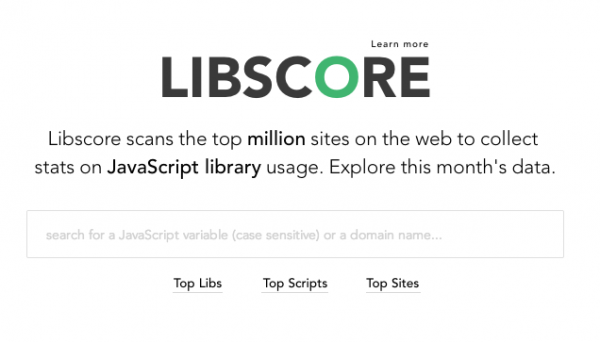 With no way of tracking how well open-source Javascript libraries are used on websites, developers are often unable to gauge the impact of their work in the larger community.
With no way of tracking how well open-source Javascript libraries are used on websites, developers are often unable to gauge the impact of their work in the larger community.
That is set to change with a new tool developed by Julian Shapiro, the man behind Velocity.js, a Javascript-based animation engine for improving the performance of a website’s user interface and workflow.
Called Libscore, the open source project scans the top one million websites each month to determine which third-party JavaScript libraries are being used.
It then aggregates this data to provide open source developers with adoption numbers for those libraries, which can be compared against others.
Prior to Libscore, developers contributed to front-end open source projects, hoping their work would be used at-large, but without having any concrete visibility.
The idea behind Libscore arose when Shapiro saw a need to accurately gauge how well Velocity.js was received.
“I knew people were using Velocity, but I couldn’t quantify its usage, let alone compare its adoption to that of similar libraries,” he says.
Through Libscore, Shapiro was not only able to get an idea of Velocity’s popularity among Web developers, he was also able to discover who his most popular users were.
“Once I confirmed that some prominent websites were using Velocity, I proudly listed them on Velocity’s homepage to bolster the project’s credibility to prospective users. Every developer should have access to this type of information,” he says.







Great writeup, seems like a positive tool for overcoming the library churn that is the current state of Javascript, and focusing on what is actually being used.